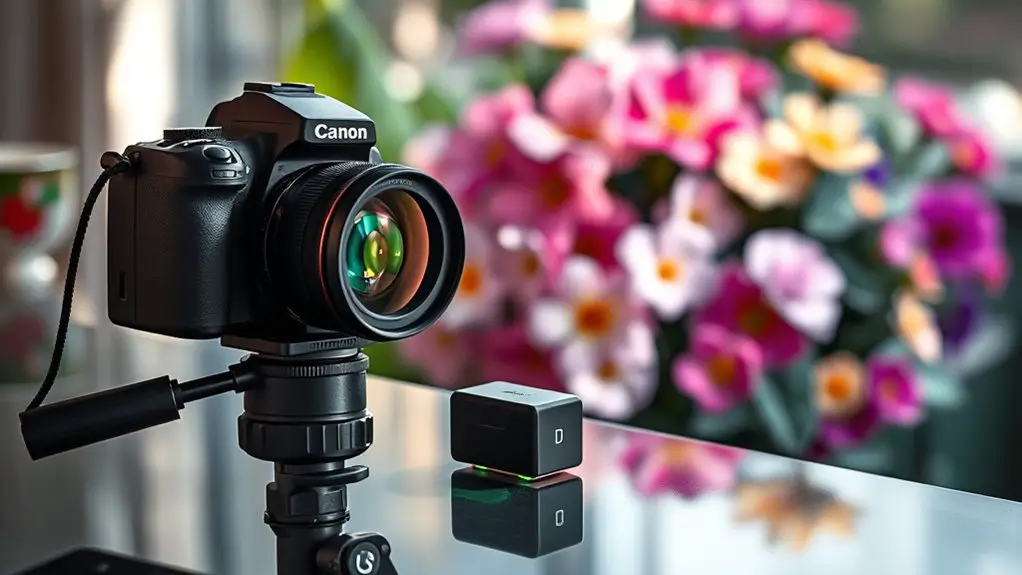LiDAR sensors enhance camera autofocus by providing precise distance measurements and depth information, surpassing traditional systems. This means quicker and more reliable focusing, even in low light. You'll find it locks onto subjects' eyes in portraits or quickly adjusts during action shots. The technology empowers your creativity, letting you capture fleeting moments without hesitation. If you're curious about how these advancements will shape the future of photography, there's more to explore.
Understanding LiDAR Technology
LiDAR technology, short for Light Detection and Ranging, is a powerful tool that uses laser beams to measure distances and create detailed 3D maps of environments. At its core, LiDAR basics involve emitting laser pulses and recording their reflections to gauge distances accurately. You'll find LiDAR applications across various fields, from topographic mapping to urban planning, and even in agriculture. This technology enhances your understanding of spatial relationships and terrain features, enabling you to make informed decisions. It's also instrumental in autonomous vehicles, helping them navigate safely. By grasping how LiDAR works, you can appreciate its impact on modern technology and its potential to improve efficiency and innovation in numerous sectors. Embrace this freedom to explore new possibilities!
The Role of LiDAR in Autofocus Systems
As technology advances, the integration of LiDAR in autofocus systems is becoming more prevalent. Using LiDAR accuracy, these systems can measure distances with remarkable precision, allowing your camera to focus quickly and effectively. Unlike traditional autofocus methods that rely on contrast detection, LiDAR provides depth information that enhances your camera's performance in various lighting conditions. You'll notice that LiDAR range enables the system to detect subjects even at greater distances, ensuring that your images remain sharp and clear. This technology not only facilitates faster focusing but also improves tracking capabilities, especially in dynamic scenes. Ultimately, embracing LiDAR in autofocus systems empowers you to capture moments with the clarity and detail you desire, giving you the freedom to focus on creativity.
Advantages of LiDAR-Enhanced Autofocus
While traditional autofocus systems can struggle in challenging lighting conditions, LiDAR-enhanced autofocus offers significant advantages that elevate your photography experience. With improved accuracy, you'll find that focusing is quicker and more reliable, allowing you to capture those fleeting moments without hesitation. Unlike conventional systems, LiDAR technology excels in low light performance, making it easier for you to shoot in dim environments. This means you won't have to compromise on quality when conditions aren't ideal. Whether you're snapping candid shots at a party or photographing a sunset, LiDAR's precision gives you the freedom to focus on creativity rather than technical limitations. Embrace the benefits of LiDAR-enhanced autofocus and take your photography to the next level.
Real-World Applications in Photography and Videography
The advantages of LiDAR-enhanced autofocus extend far beyond technical specifications; they have real-world applications that can transform how you approach photography and videography. In portrait photography, LiDAR technology can lock focus on your subject's eyes with remarkable precision, ensuring that every detail is crisp and engaging. For action videography, it allows for quick adjustments as subjects move unpredictably, capturing dynamic scenes without losing quality. With its ability to measure distance and depth, LiDAR helps you create stunning compositions in various environments, from bustling streets to serene landscapes. This innovative autofocus system empowers you to focus on creativity instead of worrying about missed shots, giving you the freedom to fully immerse yourself in your craft.
Future Trends in Camera Technology and Autofocus Systems
Emerging technologies are set to revolutionize camera systems and autofocus capabilities, shaping the future of photography and videography. As smartphone innovations continue to push boundaries, you can expect more powerful cameras with advanced autofocus systems. Hybrid systems that combine traditional phase detection with LiDAR technology will enhance accuracy and speed, ensuring you never miss a moment. These advancements will make it easier for you to capture stunning images in diverse conditions, from low light to fast movement. With AI-driven algorithms refining autofocus, you'll also enjoy seamless focus tracking on subjects. As these innovations unfold, your creative freedom will expand, allowing you to explore new possibilities in visual storytelling. Get ready for a future where your camera does the heavy lifting.
Frequently Asked Questions
How Does Lidar Differ From Traditional Autofocus Methods?
LiDAR differs from traditional autofocus by utilizing laser rangefinding to measure distances. This allows for precise depth mapping, enabling faster and more accurate focus adjustments compared to conventional methods, which often rely on contrast detection alone.
Can Lidar Sensors Work in Low-Light Conditions?
Yes, LiDAR sensors excel in low light performance, enhancing sensor accuracy even when visibility is poor. Their ability to measure distances accurately allows for reliable focusing, giving you freedom in challenging lighting conditions.
What Are the Limitations of Lidar Autofocus Technology?
LiDAR autofocus technology has limitations, like reduced accuracy in complex environments and challenges with sensor integration. You might find it struggles in certain lighting conditions or when faced with reflective surfaces, affecting overall performance.
Is Lidar Technology Expensive to Implement in Cameras?
Implementing LiDAR technology in cameras can feel like stepping into a luxurious domain. However, a thorough cost analysis reveals it often comes at a price, which can deter some from fully embracing this innovative technology adoption.
How Do Lidar Sensors Affect Battery Life in Cameras?
LiDAR sensors can impact battery life, but their efficiency often leads to battery optimization. By using less power for accurate depth measurements, you might find your camera lasting longer during shoots, enhancing your creative freedom.

